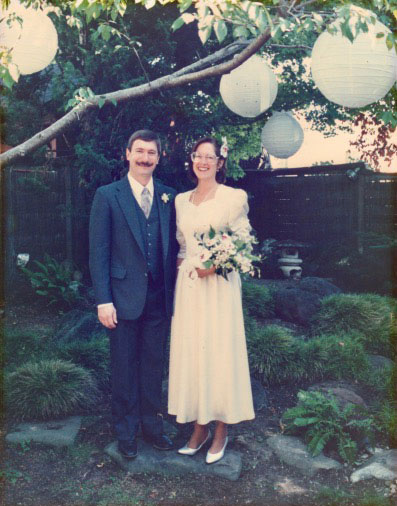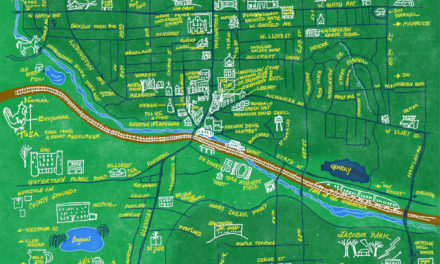Many of history’s influential discoveries were marked by a very distinct and noticeable “Eureka” moment. When Wauwatosa resident and Medical College of Wisconsin’s (MCW) Tom P. Aufderheide had one of those significant split seconds, the world was set forth on a path toward massive improvement and change.
Dr. Aufderheide’s journey began spending his youth in Duluth, MN. He practiced his undergrad work at Northwestern University, medical school at the University of Minnesota and completed his residency at MCW.
That is where he thought about focusing on emergency medicine because in the mid-80s it was what he described as a “frontier of sorts”.
“I suddenly realized that if I spent a career in (emergency medicine) I bet I could actually make a contribution to improve the care delivered to people with the greatest need,” Aufderheide said. “That’s what motivated me. I’ve had one job my entire life.”
Wife Anne helps Tom have a career of honor and achievement
 After a lifetime of ground breaking work, Dr. Aufderheide is now an internationally recognized researcher in the field of emergency cardiac care and resuscitation. His moment of discovery took him on a path that led to him to being a driving force that eventually led to the creation and implementation of the automated external defibrillator (AED).
After a lifetime of ground breaking work, Dr. Aufderheide is now an internationally recognized researcher in the field of emergency cardiac care and resuscitation. His moment of discovery took him on a path that led to him to being a driving force that eventually led to the creation and implementation of the automated external defibrillator (AED).
Because of this work in 2009 he was inducted into the prestigious Institute of Medicine of the National Academy of Sciences in Washington DC, which has been described as the highest honor in medicine short of a Nobel Prize. The Academy is an independent organization of eminent professionals from diverse fields including health and medicine.
 Tom has lived in Wauwatosa for more than 30 years with his wife Anne whom he met in 1971 while working on an undergraduate degree at Northwestern University.
Tom has lived in Wauwatosa for more than 30 years with his wife Anne whom he met in 1971 while working on an undergraduate degree at Northwestern University.
“We had a mutual friend who introduced us,” Anne said. “And I was interested right away.”
Anne is originally from California. She and Tom dated on and off for a few years before getting married in 1988. Her career took her from teaching high school theatre in the Bay Area to working for a new age and jazz record label in Milwaukee.
The positive energy emanating from this couple is palpable.
“(Anne) and I are a wonderful team,” Tom said. “I have to say (my induction into the Academy) could not have happened without Anne. She is my biggest and best supporter and half of the honor is hers.”
Lifesaving invention
Dr. Aufderheide is very humble by nature, and upon meeting him you would never know that this man helped create out-of-hospital 12-lead ECGs and automated external defibrillators [AEDs] that have had an incalculable effect on emergency care for those suffering heart distress in everyday situations. These devices are now in offices, malls, schools and just about any type of place that people gather during their daily activities.
The Center for Disease Control has done research that has concluded that the ability to diagnose a patient suffering from a heart attack nearly an hour earlier with out-of-hospital 12-lead ECGs has been instrumental in lowering the rate of deaths from heart attacks by 38% in the US alone.
“Diagnosing a heart attack before hospital arrival significantly reduced time to definitive treatment,” Dr. Aufderheide said. “The sooner you are able to diagnose and treat a heart attack, the higher the survival rate and the better the quality of life.”
There was about a 15 year period from the time Tom first began investigating the potential benefits of AEDs until the time that the American Heart Association recommended the device. After that its distribution took off. AED’s are now in public places all over the world.
“We went to the Falkland Islands, landing at the small, one-room airport with only six cars in the parking lot,” Tom said. “We walked in and, even in this corner of the world, there was a sign and a defibrillator hanging on the wall.”
The device is not difficult to implement, takes the user through audio steps during its usage, and can be employed by just about anyone to save a life.
“Somebody without a duty to respond can actually get up, call 911, grab the AED, apply the AED, and save a life,” Tom said. “Don’t be scared to utilize the device. The AED helps those in cardiac arrest, but it won’t shock the patient if the heart is beating.”
A plane ride leads to a change in laws
To achieve nationwide usage of AED devices Tom and his team first had to lobby the federal government to change both state and federal laws to allow lay people to use them. While on a plane in route to do some work in Washington, DC a bit of serendipity had put Tom on a plane with then Wisconsin Governor Tommy Thompson.
About 20 minutes into the flight, Dr. Aufderheide heard an announcement asking if there is a doctor on the plane.
“There was a man unconscious in the aisle, white as a sheet, no initial pulse and not moving and my first thought was there is no AED,” Tom said. “I thought I was going to be doing CPR until the plane landed and then he was going to die.”
The mans’ pulse came back quickly and it turned out he was fine so the plane continued on to DC. After determining the sick man simply fainted from the flu and talking to the pilots about the situation, Tom gathered up the courage to talk to the Governor.
“As I passed the Governor I took out my card and told him that if an AED was on the plane and this man was a victim of cardiac arrest he would have a much higher chance of survival as would all the citizens of Wisconsin if the legislation was passed,” Tom said. “A few months later I got a call from Thompson to come to Madison for the signing of the bill.”
Thompson was excited as he signed the bill and he had AEDs installed throughout the Capitol building in the first Public Access Defibrillation program in the State.
“Don’t be scared to utilize the device.
The AED helps those in cardiac arrest.
But it won’t shock the patient if the heart is beating.”
Many have contributed to the life saving devices
 During our conversation Tom was quick to point out that it takes a unified in order to make progress. These included the Milwaukee County, Wauwatosa, and West Allis Emergency Medical Services Departments, paramedics and EMS providers, the Medical Director, and local governmental support, to name only a few. From his partners on the project, to the people who saw its potential in the early days, to a program called Project Adam that helped to get AEDs installed in all Wisconsin schools, the success of the AED is due to the efforts of many.
During our conversation Tom was quick to point out that it takes a unified in order to make progress. These included the Milwaukee County, Wauwatosa, and West Allis Emergency Medical Services Departments, paramedics and EMS providers, the Medical Director, and local governmental support, to name only a few. From his partners on the project, to the people who saw its potential in the early days, to a program called Project Adam that helped to get AEDs installed in all Wisconsin schools, the success of the AED is due to the efforts of many.
“It is the collective efforts of so many in such a broad spectrum that ultimately can achieve things like this,” Tom said. “It is only through the dedicated and exceptional work of a collective village that we can accomplish so much.”
Tom and Anne often go to survivor events where they meet families that have had someone saved by these devices.
“It’s amazing to talk to and see the people that Tom has saved,” Anne said. “We go to a survivor dinner and you see their spouse and kids at the table and you realize how many people have been so positively affected.”
Recently new Legislation from the state of Wisconsin will see to it that all high school students are trained in the life-saving skills of CPR and AED use. Tom is not resting on his accomplishments and has continued to be a driving force in creating new ways to save lives.
“As long as I feel like my work has value and is contributing, I will keep going,” Tom said.







